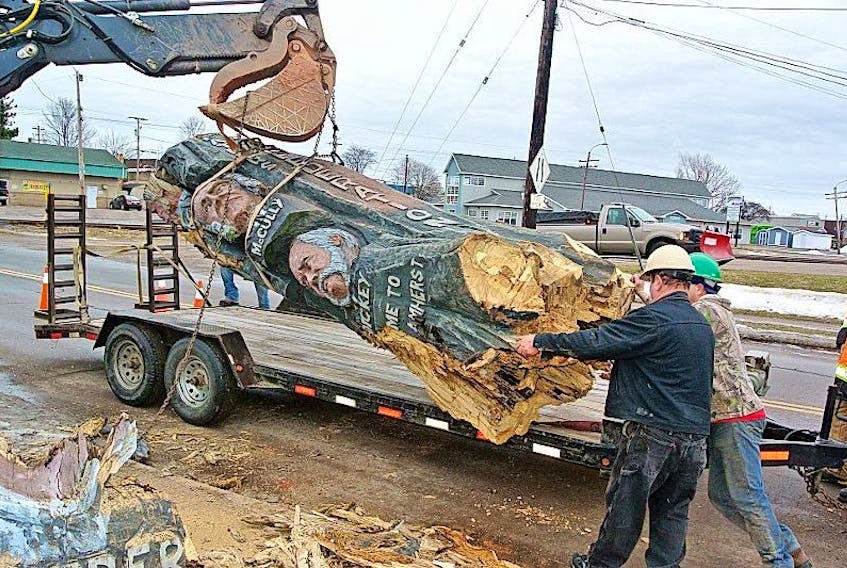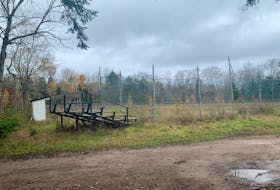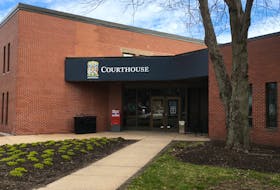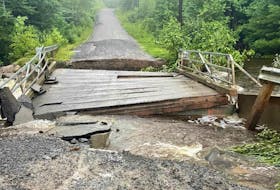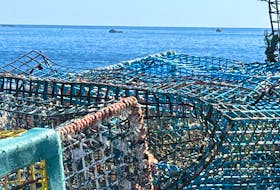The Town of Amherst hosted a forestry conference at the Community Credit Union Business Innovation Centre, and on Jan. 17 participants received insight on a menace that has changed the face of many communities: Dutch Elm Disease.
The popularity of planting elms in Canadian communities dates back to the 1800s, especially Arbour Day 1872. Over the following century the elms grew to gigantic proportions, creating a canopy over many neighbourhoods during the summer.
When DED reared its head, however, it posed a massive problem.
“Usually it’s the municipalities dealing with this,” the Town of Truro’s Andrew Williams said. “In town, for obvious reasons besides disease control, you can’t leave a tree of that size dead over public rights of way.”
Not only is the removal of old elms a costly venture – between 1999 and 2015 the Town of Truro spent over $650,000 removing its diseased elms – the loss of urban forests carries a cost in itself.
According to research by Dalhousie University, the value of an elm includes its aesthetics, soil preservation which in turns protects underground infrastructure like sewage and water lines, removes over 1,000 pounds of carbon from the air, as well as providing an annual canopy of compost and utilizing over 4,400 gallons of storm water. Replacing an old elm while still receiving the same benefits, researchers concluded, would cost $68,200 for a single tree.
The reality is, however, municipalities cannot afford to replace elms and the next option is not free either.
“As it currently sits, we have limited funding for DED removal. Provincial and federal funding has been cut so it’s up to municipalities to deal with,” Town of Amherst horticulturalist Chelsea Baird says. “We do still have DED trees remaining, the majority of those are on private properties and it's now left up to the homeowner to have those trees removed.”
In the past, Nova Scotia Power partnered with communities for up to 50 per cent of the cost of removing an elm if it was in proximately of a power line. Today, municipalities have slowed down removal efforts, but there remain resources looking to share the burden of what to do with all that wood, specifically artisans and carpenters looking to salvage the large slabs of wood inside the diseased tree.
“I have a list of names of people who will happily take away the wood from their property, so it helps cut down on the cost on homeowners,” Baird said. “A lot of carvers and a lot of furniture makers live within the area and the county and I forward their information on to the homeowner who has expressed interest in getting rid of the tree.”
When someone cannot be found to take the wood, many communities have disposed of diseased elms by burying, burning or chipping. In some instances, Amherst was able to use a portion of its diseased trees for carved statues and landmarks but a few of those have since been removed as rot continued.
Moving forward, Baird says Amherst is seeking to form a tree committee, providing council and staff awareness of community tree issues, taking inventory of the current urban trees and developing an urban forestry management plan.
The spread of Dutch Elm Disease
• 1921 – first identified in the Netherlands
• 1931 – infected logs from Europe arrive in Cleveland, Ohio
• 1944 – first identified in Quebec, Canada
• 1957 – identified in Woodstock, N.B.
• 1969 – identified in Liverpool, N.S.
• 1982 – Identified in Truro, N.S.

